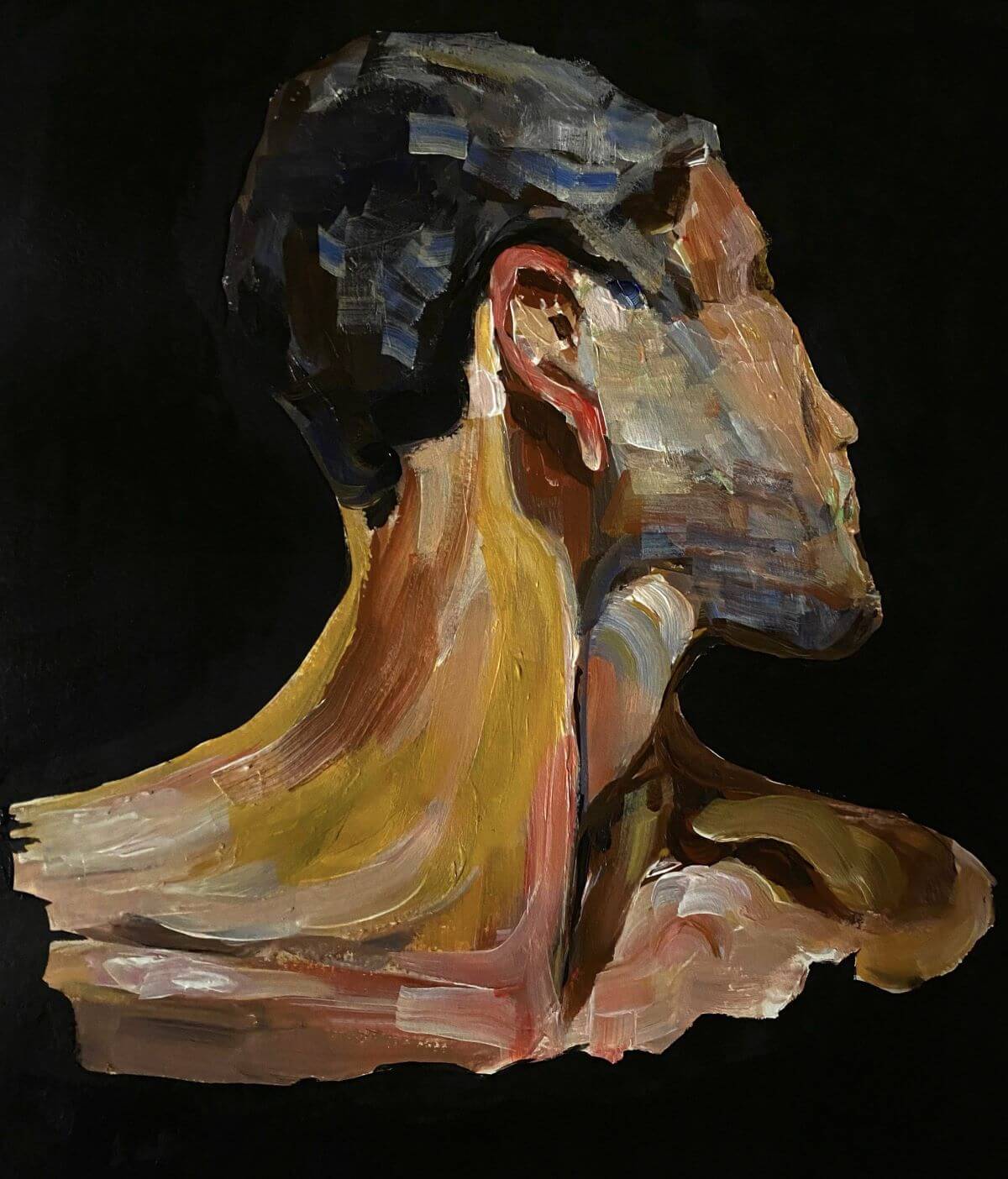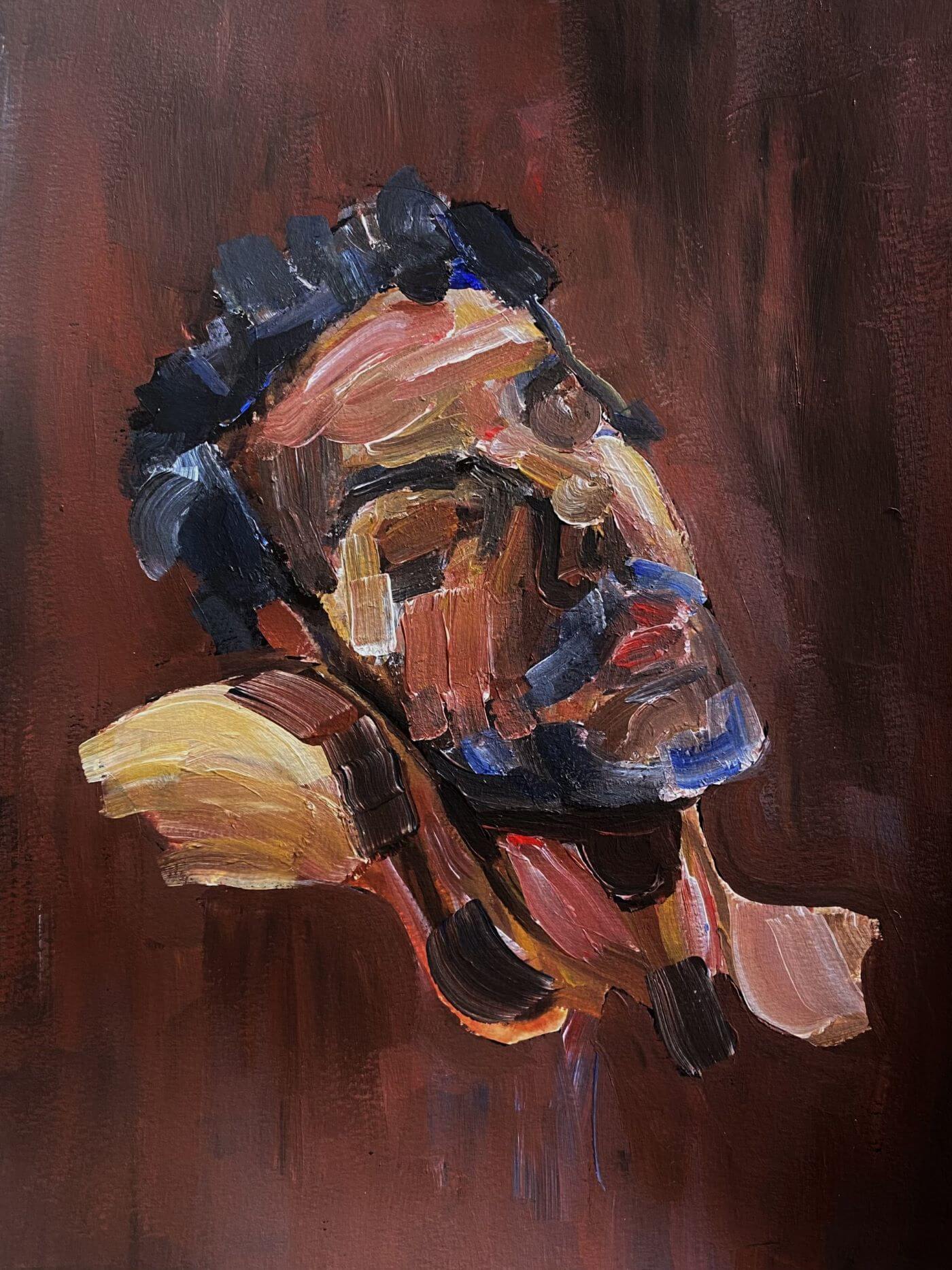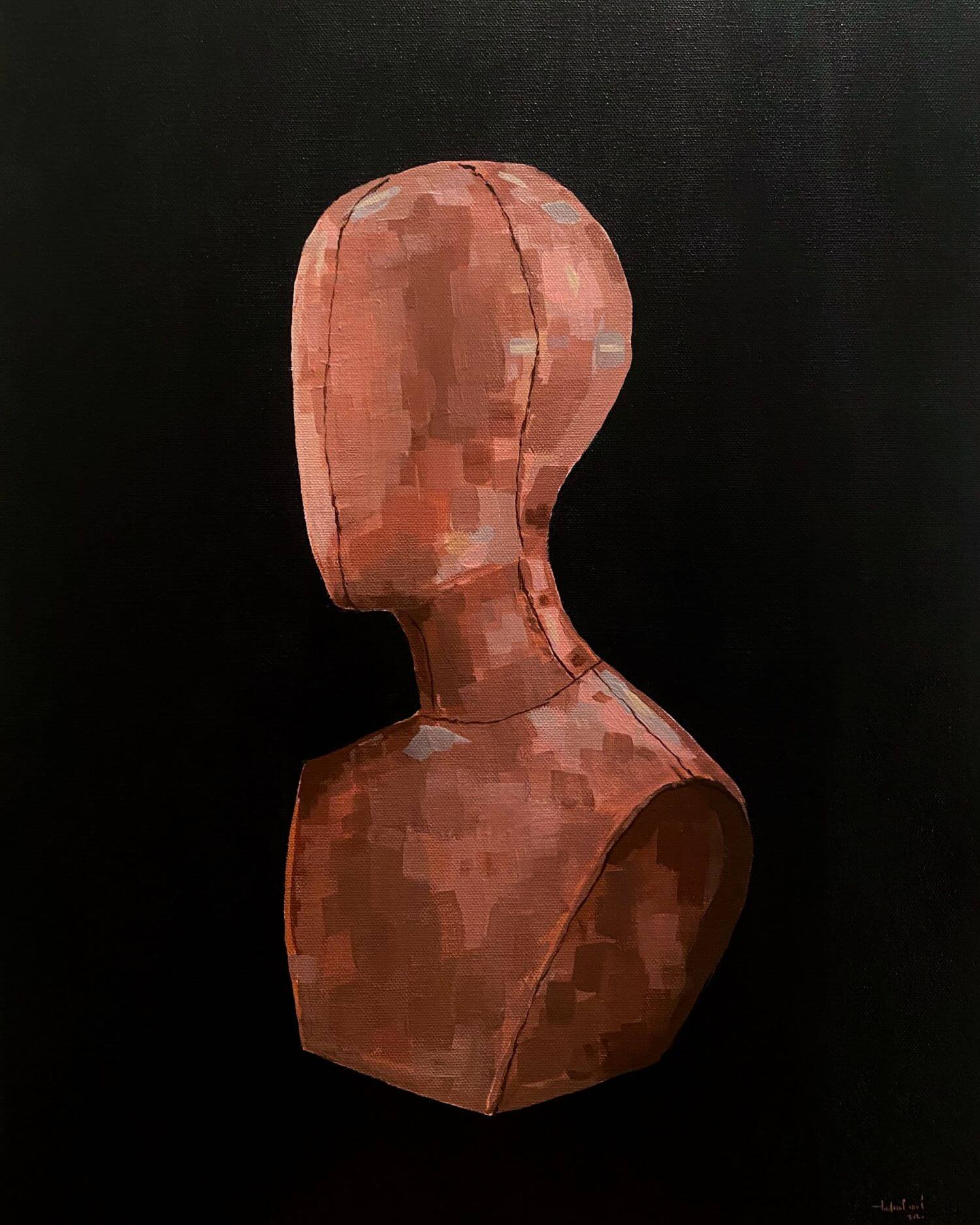 Watch This Artist: Ahmed Morsi
Watch This Artist: Ahmed Morsi


Please meet Ahmed Morsi, Cairo-based artist and architect who creates expressive portraits. An artistic outlet since his childhood, Ahmed has developed a deep connection between portraits and self-expression. Not interested in associating himself with or establishing a particular painting “style”, he enjoys intuitively mixing different mediums and techniques for each individual painting and/or series.


Mathqaf: Dear Ahmed, it’s nice to meet you. Who are you?
Ahmed: I am a self-taught artist with a particular affiliation to portrait-painting.
Mathqaf: Where and what did you study?
Ahmed: I studied Architecture in Cairo and went on to pursue graduate studies in architectural design and history in Mantua in northern Italy.
Mathqaf: Tell us about your practice.
Ahmed: I have always been drawn to creating portraits since childhood. For a long time stuck with graphite as a medium, I decided to start experimenting with painting and mixing different mediums and techniques in my late teens. For the longest time kept as merely an artistic outlet and a consistent source of validation from others, I decided to allow my art to occupy a more generous part of my identity and to free myself from the shackles of dogmatic painting methods and techniques (and with it any praise about how “realistic” my work is). This has allowed me to become freer in exploring the dance between technique (or lack thereof) and intuitive honest expression.


Mathqaf: What do you listen to when you work?
Ahmed: It really depends on the kind of emotion or state of mind I’m trying to emphasise and capitalise on. But lately I’ve been finding myself starting with Albinoni’s Adagio in G Minor and working my way from there. Farid Farjad has also been particularly inspiring in my latest painting.
Mathqaf: What themes do you pursue?
Ahmed: Lately I’ve been preoccupied with exploring and representing male sensuality in my paintings. And especially the West Asian North African male form which I find to still be equally underrepresented in all artistic niches and historically fetishised by the white gaze.


Mathqaf: What work do you most enjoy doing?
Ahmed: I have been painting portraits for a little more than 10 years now. After several attempts in the past to try and shift away from portraits and explore other forms of painting, I came to the realisation — as part of a larger journey of self-discovery — that I was always drawn to painting portraits because of the medium’s nature of allowing one to freely project their state of being and inner self-image onto a fictitious human form of their creation.
Mathqaf: How has your practice changed over time?
Ahmed: Although never consciously synthesised from the get go, I see the larger trajectory of my paintings — in terms of technique, medium, and choice of subject — as a mirror of my own growth. For me, portraits present themselves as a quite literal form of self expression hiding behind a carefully but also intuitively manufactured face. Growing up, the all too frequent question of “who are you drawing?” had always been met with a defensive “no one”.
I see my latest series of three paintings as the final chapter in a long transitional phase in my artwork and a culmination of all of my attempts to cautiously project my inner self onto an image by literally and shamelessly using myself as the subject. I believe this confrontation — which will be read by some as a vulgar materialisation of narcissism — will allow me to become freer in my future work.
Mathqaf: What is your dream project?
Ahmed: I don’t have a particular project in mind but I’m always looking to connect with people that would be interested in being painted and see what comes out.
Mathqaf: What do you do outside your practice?
Ahmed: Alongside painting, I’m currently pursuing a career in architectural remodeling and adaptive reuse. I also find comfort in cooking and styling.
Mathqaf: Why do you do what you do?
Ahmed: Portraits have always been a safe space for me to express myself freely however vague the connection might seem (even to myself). Only after coming to this realisation have I been able to (and continue to) grow and allow myself to mature as an artist.




 Watch This Artist: Ahmed Morsi
Watch This Artist: Ahmed Morsi 

